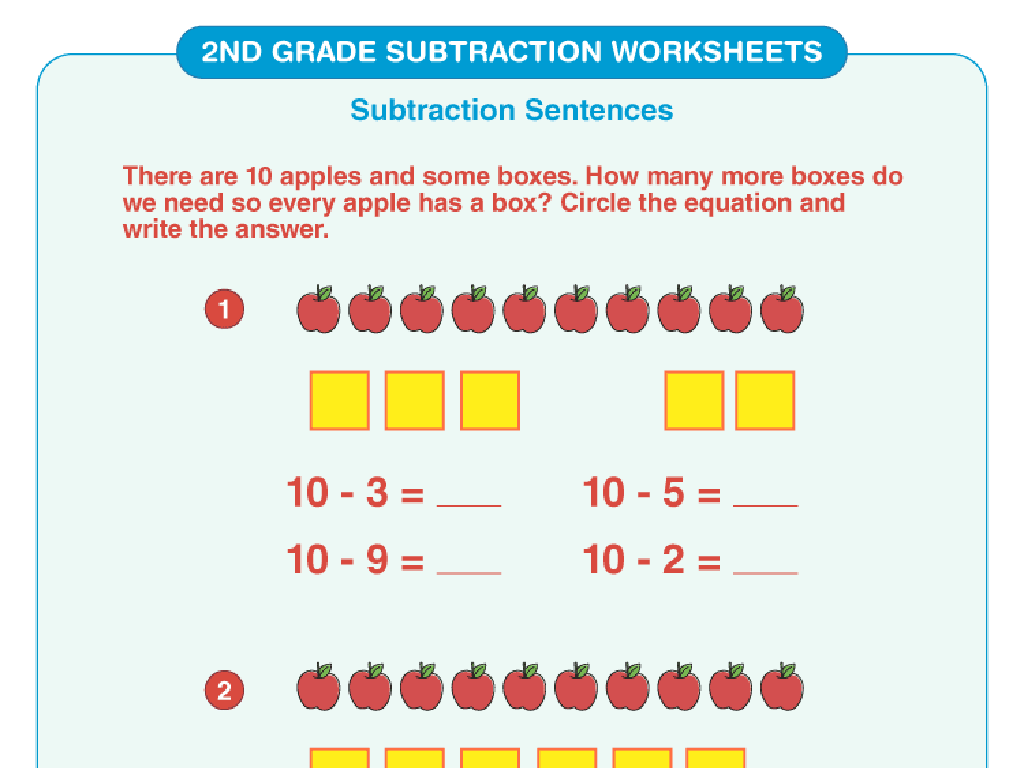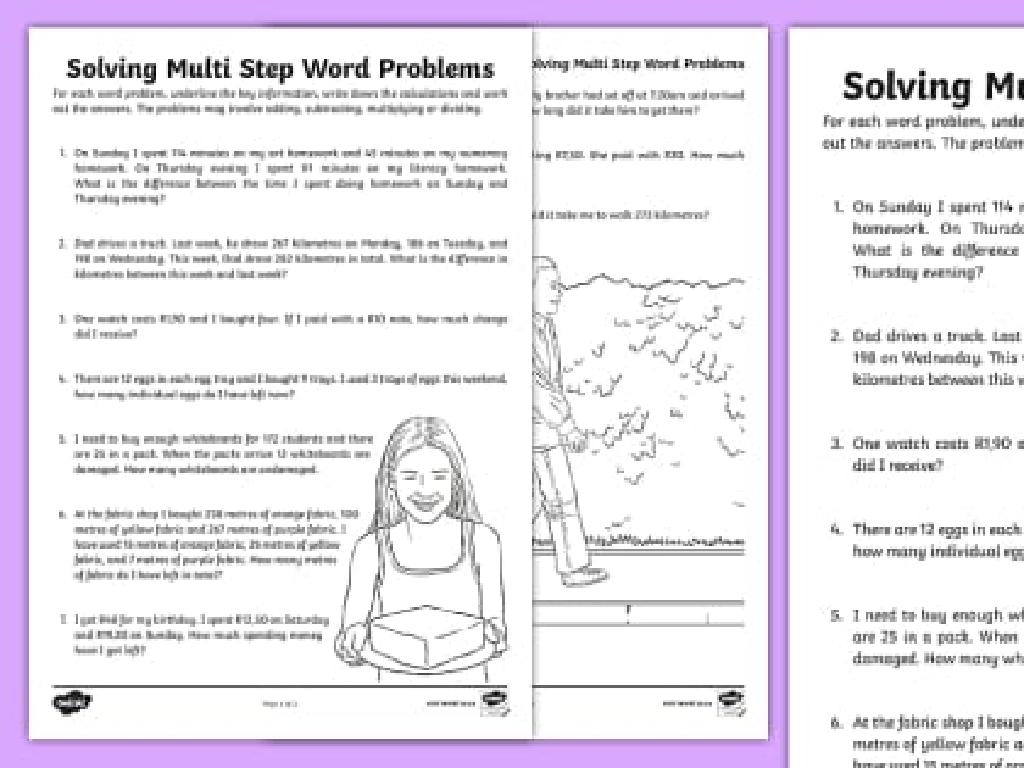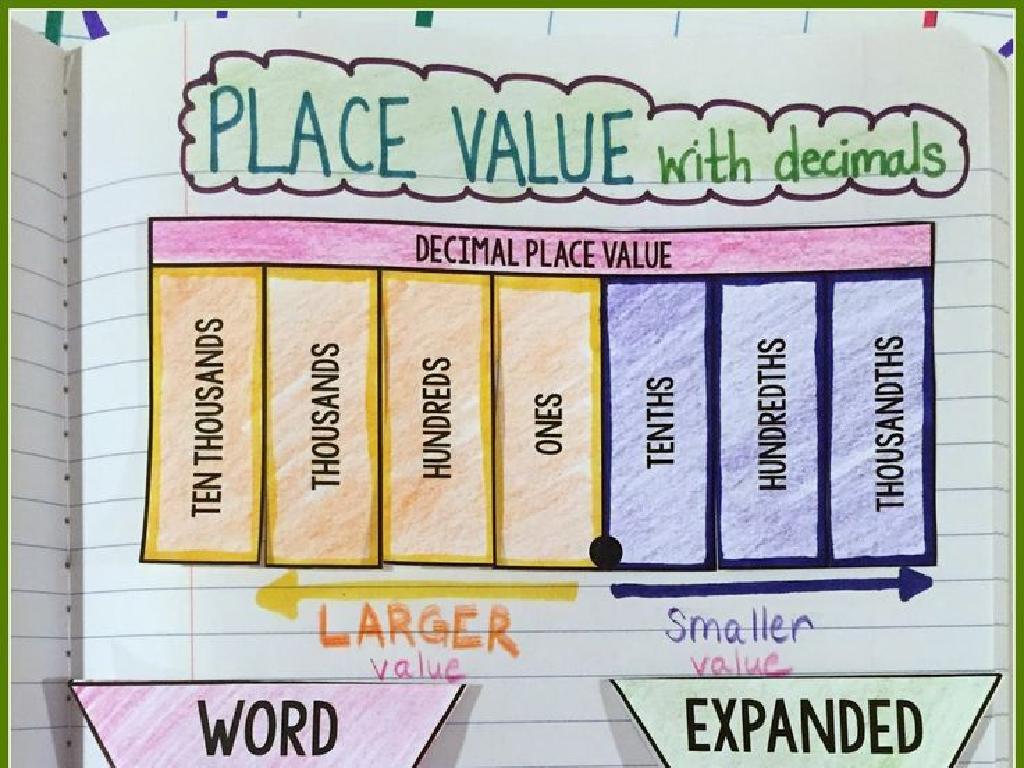Water On Earth
Subject: Science
Grade: Third grade
Topic: Earth'S Features
Please LOG IN to download the presentation. Access is available to registered users only.
View More Content
Welcome to Water on Earth!
– Earth’s water introduction
– Our planet has oceans, rivers, and lakes that make life possible.
– Why water is important
– Water is essential for all living things to grow, drink, and clean.
– Water on Earth quick facts
– Did you know? 71% of Earth’s surface is covered in water, but only 2.5% is fresh!
– Water’s role in our lives
– We use water every day for drinking, cooking, and bathing.
|
This slide is meant to spark curiosity about Earth’s water among third-grade students. Begin by explaining that Earth is unique because it has so much water, which is why we can live here. Emphasize the necessity of water for survival, health, and hygiene. Share interesting facts, like the vast amount of water covering Earth’s surface and the scarcity of fresh water. Discuss daily uses of water to make the topic relatable. Encourage students to think about how they interact with water every day and to consider its value in their lives and the environment.
Where is Earth’s Water?
– Earth’s water locations
– Oceans, rivers, lakes, glaciers, and underground
– Fresh water vs. salt water
– Oceans have salt water, rivers and lakes mostly have fresh water
– Importance of fresh water
– Fresh water is needed for drinking, farming, and cleaning
– Discuss in small groups
|
This slide introduces students to the various reservoirs of water on Earth, emphasizing the distinction between salt water and fresh water. The majority of Earth’s water is found in the oceans, which is salty and not suitable for human consumption without desalination. Fresh water, however, is found in rivers, lakes, and underground sources, and is vital for life as it is used for drinking, agriculture, and sanitation. Encourage students to think about how they use water every day and why it’s important to conserve fresh water. During the small group discussion, guide them to talk about the uses of fresh water and why it is essential for our survival and the health of the planet.
The Water Cycle Adventure
– Discover the water cycle stages
– Evaporation, condensation, precipitation, collection
– Learn how the water cycle works
– Sun heats water, it rises, cools down, forms clouds, then falls as rain
– Role-play: Be a water molecule!
– Pretend you’re a water droplet traveling through the cycle
|
This slide introduces the water cycle to third-grade students in a fun and interactive way. Begin by explaining the stages of the water cycle: evaporation (water turns into vapor), condensation (vapor turns into clouds), precipitation (clouds release rain), and collection (water gathers in bodies of water). Use simple language and examples, like how puddles dry up or how clouds form in the sky. For the role-play activity, guide the students to imagine they are a water droplet going through the stages of the water cycle. This can be a physical activity where they move around the classroom or a drawing activity where they illustrate their journey. The goal is to help them understand the continuous movement of water on Earth. Provide clear instructions and ensure safety during the activity. Consider different scenarios like starting as a snowflake or a drop in the ocean to cater to diverse learning styles.
Water Conservation: Saving Water Every Day
– Why saving water is important
– Water is precious and limited; we need it to live and grow.
– Daily water-saving tips
– Turn off the tap while brushing, fix leaks, use a watering can for plants.
– Class brainstorm activity
– Think of ways we can save water together as a class.
– Water conservation at school
– Could we collect rainwater? Use less water in the bathroom?
|
This slide aims to educate students on the importance of water conservation and to engage them in thinking about practical ways to save water. Start by explaining that water is a limited resource and essential for all life on Earth. Discuss simple actions they can take at home, like turning off the tap when not in use. The class brainstorm activity encourages collaborative thinking and allows students to come up with creative ideas for conserving water in their school environment. This activity not only teaches them about sustainability but also empowers them to contribute to water conservation efforts.
Water and Living Things
– Importance of water for life
Plants and animals need water to survive.
– Water habitats variety
Rivers, oceans, and ponds are different water homes.
– Match game: Creatures and habitats
Interactive game to learn about where animals live.
– Discuss habitat examples
Examples: Fish in rivers, Frogs in ponds
|
This slide aims to teach students about the crucial role water plays in the survival of plants and animals, and the diversity of water habitats. Begin by discussing how all living things need water to live, grow, and stay healthy. Introduce various water habitats such as rivers, lakes, oceans, and ponds, and how different creatures are adapted to live in each. The interactive game should involve matching animals to their correct water habitat, reinforcing the concept of adaptation and habitat selection. Encourage students to think about why certain animals live in specific habitats and how they might be uniquely suited to their environments. After the game, discuss with the class why each animal is matched to its particular habitat.
Water Safety
– Stay safe around water
– Never swim alone & always have an adult nearby
– Follow rules for water play
– Walk, don’t run near pools & always listen to lifeguards
– Create safety posters
– Use colors & words to make posters that teach us how to be safe
|
This slide introduces the concept of water safety to the students. Emphasize the importance of always being cautious around water, whether it’s a small pond, a swimming pool, or the ocean. Discuss the basic rules for swimming and playing near water, such as not running on wet surfaces and always having an adult present. For the group activity, provide students with materials to create water safety posters. These can include markers, crayons, and large paper. Divide the class into small groups and let them brainstorm and create posters that highlight key water safety rules. Once completed, these posters can be displayed around the classroom as constant reminders of how to stay safe around water. Suggest that each group focuses on a different aspect of water safety for their poster to cover a range of topics.
Class Activity: Water Filtration Experiment
– Learn how water gets cleaned
– Gather materials for the experiment
– We’ll use items like plastic bottles, coffee filters, sand, and gravel
– Follow steps to filter water
– We’ll build a simple filter and pour dirty water through to clean it
– Observe and record the results
|
This activity is designed to teach students about the water filtration process. Begin by explaining the importance of clean water and how it is achieved in real-world applications. For the experiment, students will use common materials to create a basic filtration system, mimicking how water is treated before it reaches our taps. Provide a clear, step-by-step guide for the students to follow, ensuring safety and supervision throughout the process. After the experiment, discuss the results with the class, focusing on what they observed during the filtration. Encourage them to think about how this process relates to the larger water cycle and its importance to life on Earth. Possible variations of the activity could include testing different natural filters, like soil or charcoal, or comparing the effectiveness of various filter materials.
Wrapping Up: Water on Earth
– Recap of Earth’s water lessons
– Discuss water’s importance
– Why do we need water to live? How does it help our planet?
– Homework: Draw the water cycle
– Choose a stage like evaporation, and use colors to show it
– Explain your drawing at home
– Share what you’ve learned with your family
|
As we conclude our lesson on Water on Earth, it’s important to review the key points we’ve covered. Encourage the students to think about and discuss the role water plays in our lives and the environment. For homework, students should draw and color a part of the water cycle they find interesting, such as precipitation, condensation, or collection. They should then explain their drawing to their family, which will help reinforce their understanding and allow them to demonstrate their knowledge. This activity will also help develop their communication skills as they articulate what they’ve learned.






